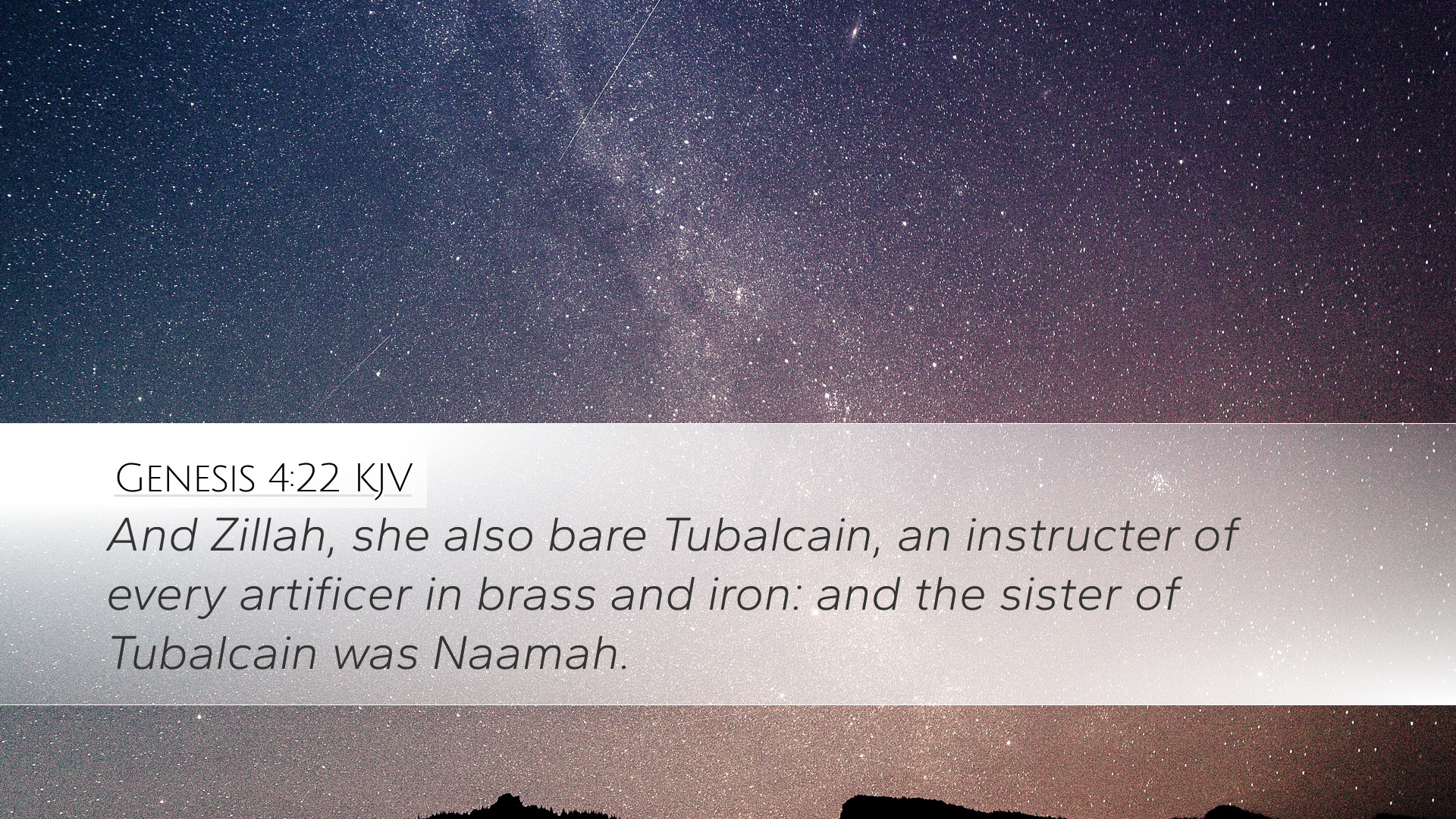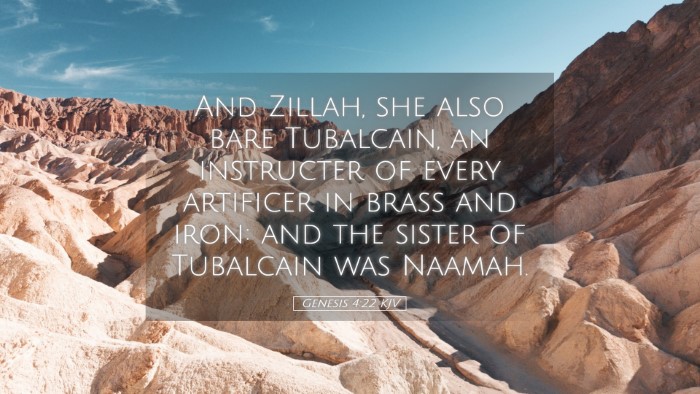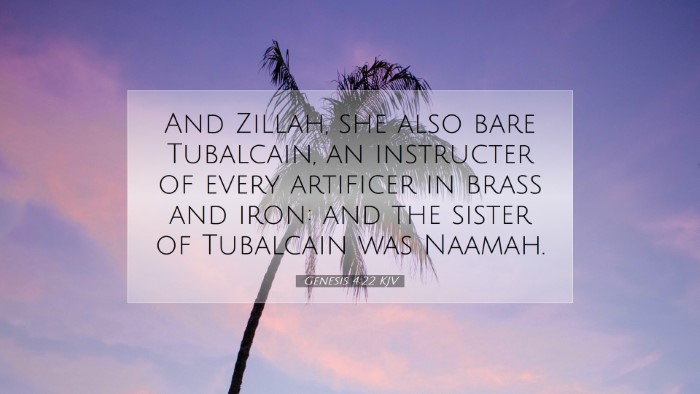Commentary on Genesis 4:22
Verse (Genesis 4:22): "And Zillah, she also bare Tubal-cain, an instructor of every artificer in brass and iron: and the sister of Tubal-cain was Naamah."
Introduction
This verse highlights the lineage of Cain, particularly focusing on Tubal-cain, who is noted as a forger of metalwork. The verse offers insight into early human civilization's development of technology and the significance of craftsmanship.
The Context of Genesis 4
The narrative of Genesis 4 details the aftermath of Cain and Abel's story, emphasizing Cain's descendants. This chapter illustrates the growth of civilization following the fall and the consequences of sin. It provides a backdrop to understand how humanity began to shape its culture and technology.
Insights from Matthew Henry
Matthew Henry provides a comprehensive view on the implications of Tubal-cain’s work. He identifies Tubal-cain not just as a smith but as a pioneer in metallurgy:
- Technological Advancements: Henry notes that the mention of brass and iron signifies a pivotal advancement in human capability. Metalwork enabled more efficient tools and weapons, representing not just innovation but also the growing complexity of human society.
- Artisanship: This verse emphasizes the rise of skilled labor and the idea of craftsmen as essential societal figures. The trade of forging becomes a respected profession, suggesting the importance of skilled labor in the development of communities.
Insights from Albert Barnes
Albert Barnes further expounds on the meaning of the names and their relevance:
- Tubal-cain: Barnes states that the name “Tubal-cain” can be interpreted to mean “the rod of Cain,” which may imply a legacy of both innovation and destruction. This points to a duality present in human achievement – progress often rooted in sin.
- Naamah: The text also introduces Naamah, suggesting that she may have been significant in her own right. Barnes posits that her name means “pleasantness,” indicating that women played crucial roles alongside men in the early development of society.
Insights from Adam Clarke
Adam Clarke elaborates on the sociocultural implications of the verse:
- Innovations of Tubal-cain: Clarke views Tubal-cain as a figure representing man’s ingenuity. His skills in metallurgy reflected a deeper understanding of nature’s elements and the potential to mold them into useful forms.
- Reflection of Human Nature: Clarke warns that although advancements may lead to prosperity, they can also lead to moral and ethical decline. The skills and trades, if mismanaged, may contribute to human conflict, particularly in the using of weapons created from these metals.
Theological Reflections
This verse provides deep theological reflections on the nature of human progress:
- The Balance of Progress and Sin: The development of technology is not inherently good or bad; rather, its moral implications depend on how humans choose to use these advancements.
- God’s Sovereignty: While this passage documents human innovation, it also subtly acknowledges God’s presence in guiding early humanity through both their achievements and failures.
Application for Today
For pastors, students, theologians, and scholars, Genesis 4:22 serves as a reminder of the responsibility that accompanies human ingenuity:
- Ethics of Creation: In an age marked by rapid technological progress, it is essential to ask how these creations serve humanity and glorify God.
- The Ideal of Work: This verse encourages a view of work that honors God. As Tubal-cain is recognized for his craftsmanship, so too should the work of individuals today be seen as a means to reflect creativity and diligence.
Conclusion
Genesis 4:22 encapsulates the beginning of human technological advancement through Tubal-cain's innovations. It invites contemplation on how such developments can shape society positively and calls for ethical stewardship of these capacities. The insights offered by Matthew Henry, Albert Barnes, and Adam Clarke provide a rich tapestry of understanding that resonates with contemporary issues, serving as guidance for modern reflection on the nature of skill, creativity, and moral responsibility.


